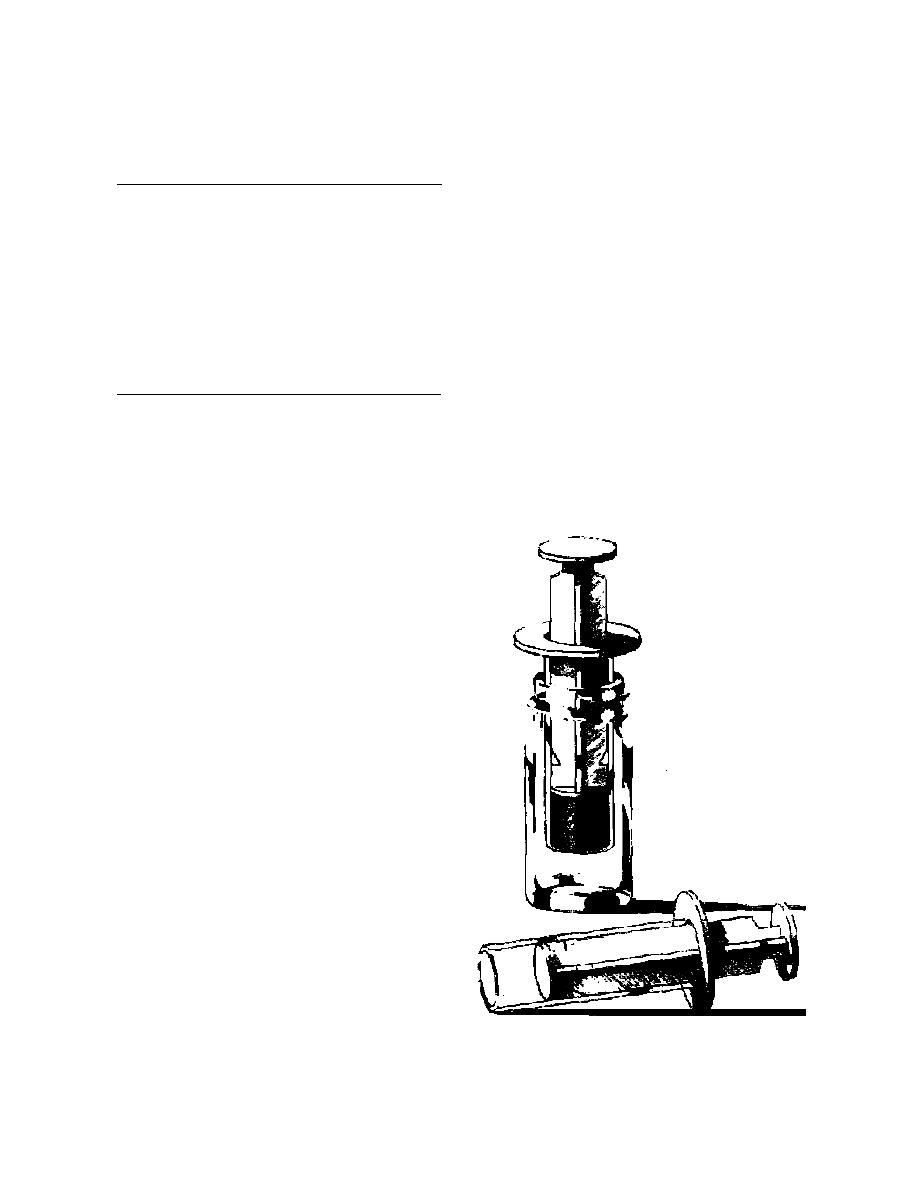
cially available (U.S. Oil Co., Inc., Kimberly, Wis-
Table 1. Sampling rates for five different sub-
consin) and also can be made from a small piece
surface bulk sample retrieval technologies.
of pipe and solid rod. This type of subsampling
device helps to maintain the structure of the ma-
Clay soil*
Sandy soil*
terials being sampled during collection and trans-
Hollow stem augering
18
57
fer to a VOA vial or a larger bottle.
split spoon sampler
The VOA vials or bottles used for sample col-
lection should be made of glass, have a Teflon-
SimulprobeTM Core Barrel
22
41
lined septum, and a rigid cap that creates an air-
Sampler†
tight (hermetic) seal when screwed on. The
JMC Environmentalist's
13
21
thickness of the Teflon used for lining the septum
Subsurface Probe**
should be at least 10 mil. The selection of a coring
tool size depends on the following: size of the
AMS Dual Tube Liner††
29
44
opening on the collection vial or bottle (tool should
GeoprobeTM Large-Bore soil
17
31
fit inside the mouth of the sample bottle), particle
sampler***
size of the solid materials (e.g., gravel-size particles
would require larger samplers), and volume of
*Average number of samples collected over an 8-hr period (i.e.,
sample required for analysis. To collect an undis-
time to set up equipment, collect a sample at one specified
turbed subsample, the barrel of the coring tool is
depth, grout hole, decon equipment, and move to next sam-
pling location).
pushed into a freshly exposed surface and re-
†Simulprobe, 150 Shoreline Highway, Bld E, Mill Valley, CA
moved once the desired volume has been ob-
94941.
**Clements Associates, Inc. (JMC Environmentalist's Subsur-
face Probe), 1992 Hunter Avenue, Newton, IA 50208.
††Art's Manufacturing & Supply, Inc. (Dual Tube Liner Sam-
pler), 105 Harrison St., American Falls, ID 83211.
***Geoprobe Systems, 601 N. Broadway, Salina, KS 67401.
these five different bulk sampling systems. The
other criteria evaluated during this program, while
exposing some limitations and potential weak-
nesses, did not establish that any of these subsur-
face sampling systems would be inappropriate for
site characterization.
Discrete samples (i.e., subsamples taken for analysis)
After a fresh surface is exposed to the atmo-
sphere, whether it is a split-spoon, barrel liner, pit
wall, or a surface location (e.g., manually dug
hole), the subsampling process should be com-
pleted in a couple of minutes. If a surface has been
exposed for more than a couple of minutes, it
should no longer be considered fresh, and rough
trimming of at least 2 cm from the surface with a
clean spatula, scoop, knife, or shovel should be
performed before subsample collection. To obtain
and transfer a subsample, a hand-operated cor-
ing tool that acquires and holds a subsample of
the appropriate size for analysis (e.g., 5 g or larger)
should be used. Coring tools for the purpose of
transferring a subsample can be made from dis-
posable plastic syringes by cutting off the tapered
Figure 1. Modified 10-mL syringe and empty VOA vial.
front end and removing the rubber cap from the
The syringe was modified by removing the tip and rub-
plunger (Fig. 1). Plastic coring tools are commer-
ber plunger cap.
3



 Previous Page
Previous Page
